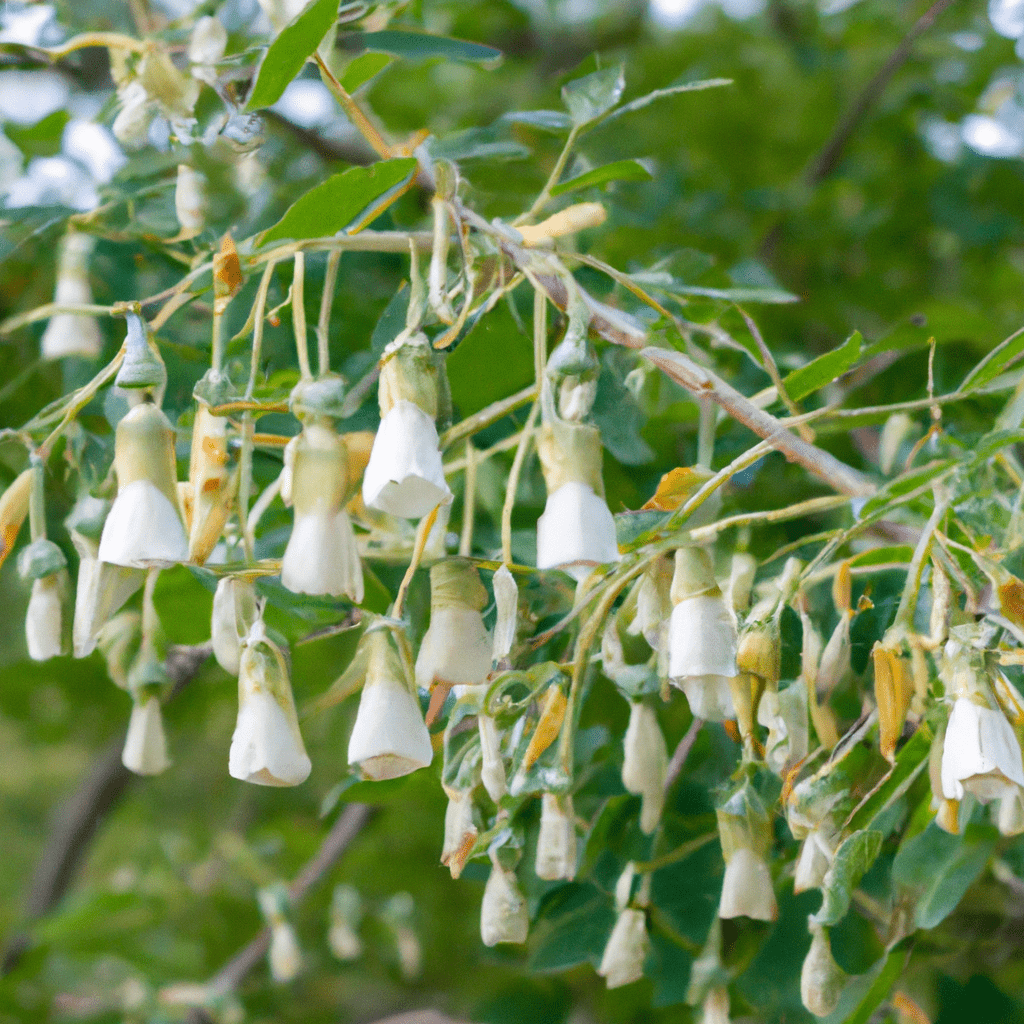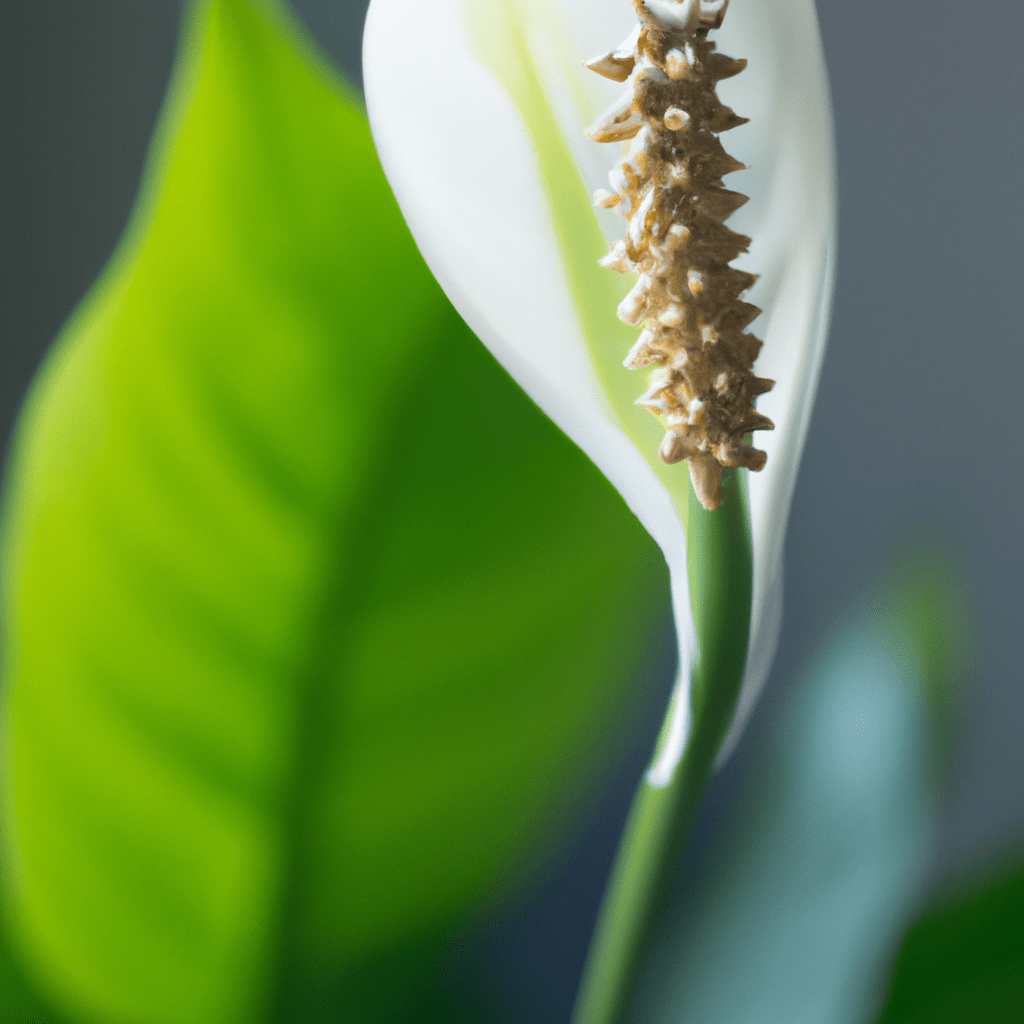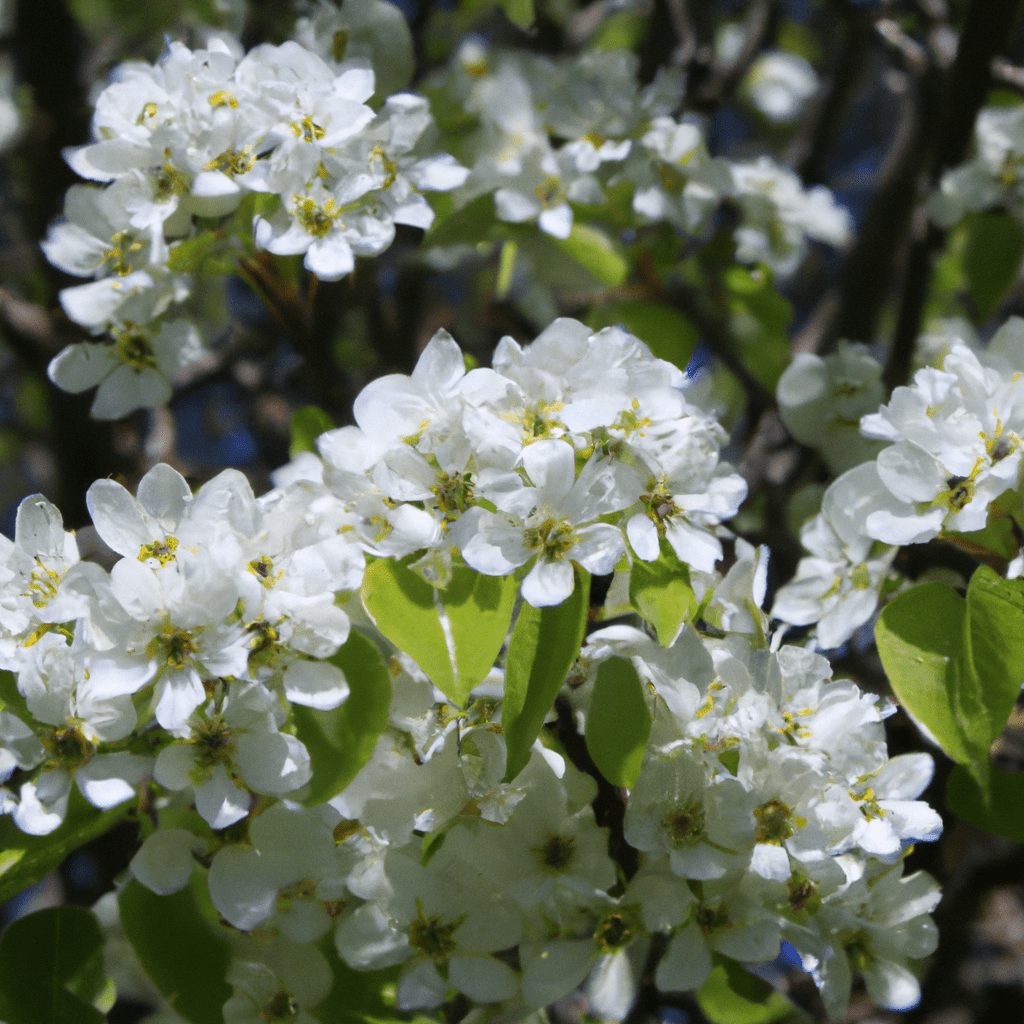Carolina Silverbell Tree (Halesia carolina) is a stunning flowering tree native to the southeastern United States. With its delicate bell-shaped flowers and vibrant foliage, it adds beauty and elegance to any landscape. In this article, we will explore 30 fascinating facts about the Carolina Silverbell tree, from its unique characteristics to its ecological significance. So let’s dive in and discover the wonders of this remarkable tree.
Fact 1: Native Habitat
Carolina Silverbell trees are native to the eastern United States, specifically the Appalachian region. They can be found growing in the wild across states such as North Carolina, South Carolina, Georgia, Tennessee, and Virginia. Their natural habitat includes moist woodlands, stream banks, and slopes, where they thrive in the filtered sunlight and rich, well-drained soils.
Fact 2: Unique Name
The Carolina Silverbell tree gets its name from the attractive bell-shaped flowers it produces during springtime. The flowers hang gracefully from the branches, resembling a cluster of silver bells, hence the name “Silverbell.” The addition of “Carolina” to its name signifies its native range and origin.
Fact 3: Ornamental Value
Carolina Silverbell trees are highly valued for their ornamental beauty. Their delicate white or pale pink flowers, which bloom in late spring, create a breathtaking display. The bell-shaped flowers dangle from the branches like delicate chimes, attracting pollinators such as bees and butterflies. The tree’s vibrant green leaves turn a vibrant yellow in the fall, adding a touch of autumnal beauty to the landscape.
Fact 4: Small to Medium-Sized Tree
Carolina Silverbell trees typically range in height from 20 to 40 feet, making them a perfect choice for smaller landscapes or as an understory tree. They have a rounded, open canopy with branches that extend horizontally, creating an appealing silhouette. Their moderate size makes them suitable for both residential gardens and larger-scale landscaping projects.
Fact 5: Four-Season Interest
One of the exceptional qualities of the Carolina Silverbell tree is its four-season interest. In spring, the tree bursts into a profusion of bell-shaped flowers, bringing beauty and charm to the landscape. During summer, its lush green foliage provides a cool and refreshing canopy. In the fall, the leaves turn a vibrant yellow, creating a stunning display of autumn colors. Even in winter, the tree’s distinctive branching pattern adds architectural interest to the surroundings.
Fact 6: Attracts Pollinators
The Carolina Silverbell tree is highly attractive to pollinators, such as bees and butterflies. The bell-shaped flowers produce nectar and provide a valuable food source for these beneficial insects. By planting Carolina Silverbell trees, you can support pollinator populations and contribute to the overall health of your local ecosystem.
Fact 7: Symbolic Significance
In addition to its aesthetic appeal, the Carolina Silverbell tree holds symbolic significance in certain cultures. It is often associated with purity, beauty, and grace. The bell-shaped flowers are seen as a representation of joy and celebration, making the tree a popular choice for special occasions and ceremonial plantings.
Fact 8: Tolerant of Shade
Carolina Silverbell trees are known for their shade tolerance, making them well-suited for woodland gardens or areas with filtered sunlight. While they prefer partial shade to full sun, they can adapt to different light conditions. This adaptability allows them to thrive under the canopy of larger trees, providing a stunning understory layer.
Fact 9: Drought Tolerance
Despite their preference for moist, well-drained soils, Carolina Silverbell trees exhibit a degree of drought tolerance once established. They have moderate water requirements and can
withstand short periods of dryness. However, it is still beneficial to provide regular watering, especially during prolonged dry spells, to ensure optimal growth and health.
Fact 10: Wildlife Value
Carolina Silverbell trees offer significant wildlife value by providing food and shelter for various species. The flowers attract bees and butterflies, which aid in pollination. The tree’s small fruits, known as drupes, are a food source for birds and small mammals. Additionally, the dense branching structure provides nesting sites and cover for birds, enhancing biodiversity in the area.
Fact 11: Versatile Landscape Use
Carolina Silverbell trees have versatile landscape use, adding beauty and functionality to various settings. They make excellent focal points in gardens, where their unique flowers and foliage can take center stage. They can also be used as specimen trees, planted in groups for a more dramatic effect, or incorporated into mixed woodland plantings to create a naturalistic setting.
Fact 12: Easy to Grow
Carolina Silverbell trees are generally easy to grow and maintain, making them suitable for both novice and experienced gardeners. They have few serious pest or disease issues and are relatively low-maintenance once established. Providing them with well-drained soil, regular watering during dry periods, and occasional pruning to maintain their shape and remove any dead or damaged branches will help ensure their health and longevity.
Fact 13: Medicinal Uses
Traditionally, various parts of the Carolina Silverbell tree, including the bark, leaves, and roots, were used for their medicinal properties by Native American tribes. They were believed to have analgesic, anti-inflammatory, and diuretic effects. While modern medicine does not extensively utilize these traditional uses, it highlights the cultural significance and historical value of this remarkable tree.
Fact 14: A Host Plant for Butterflies
Carolina Silverbell trees serve as a host plant for certain butterfly species, including the stunning Eastern Tiger Swallowtail (Papilio glaucus). Female butterflies lay their eggs on the leaves of the tree, and once hatched, the caterpillars feed on the foliage. By planting Carolina Silverbell trees, you can contribute to the life cycle of these beautiful butterflies and support their populations.
Fact 15: Longevity
Carolina Silverbell trees have the potential for a long lifespan when provided with suitable growing conditions. With proper care and maintenance, they can live for several decades, becoming a treasured fixture in the landscape. Their enduring presence can serve as a reminder of the passage of time and the enduring beauty of nature.
Fact 16: Landscape Enhancement
The Carolina Silverbell tree has a natural elegance that enhances any landscape. Whether used as a solitary specimen tree, part of a mixed border, or incorporated into a woodland garden, it brings a sense of grace and tranquility to the surroundings. Its delicate flowers, vibrant foliage, and attractive branching structure make it a sought-after tree for enhancing the aesthetic appeal of outdoor spaces.
Fact 17: Cultural Significance
The Carolina Silverbell tree holds cultural significance in certain regions where it is native. It is sometimes associated with folklore, legends, or traditional stories, adding a sense of mystique to its allure. Exploring the cultural significance of this tree can provide a deeper understanding of its historical and societal importance.
Fact 18: Springtime Spectacle
When the Carolina Silverbell tree blooms in spring, it puts on a spectacular display of beauty and fragrance. The bell-shaped flowers, which hang delicately from the branches, create a captivating sight. As they sway in the breeze, they release a gentle, sweet fragrance, attracting pollinators and delighting those who come across them.
Fact 19: Wildlife Habitat
Carolina Silverbell trees contribute to the creation of wildlife habitats
, providing food and shelter for various creatures. The flowers attract bees, which are essential pollinators for many plant species. The tree’s fruits are consumed by birds and small mammals, supporting their survival and contributing to the overall ecosystem balance.
Fact 20: Resilience
Carolina Silverbell trees exhibit resilience, withstanding various environmental conditions and adapting to different soil types. While they prefer moist, well-drained soils, they can tolerate a range of soil pH levels, from acidic to slightly alkaline. Their adaptability allows them to thrive in diverse landscapes and climates, making them a versatile choice for many regions.
Fact 21: Environmental Benefits
The presence of Carolina Silverbell trees in the environment offers several environmental benefits. They help improve air quality by absorbing carbon dioxide and releasing oxygen. Their foliage provides shade, reducing the heat island effect in urban areas and conserving energy by reducing the need for cooling. Additionally, their root systems help prevent soil erosion and improve soil structure.
Fact 22: Ephemeral Beauty
The beauty of Carolina Silverbell trees is ephemeral, making their blooming period even more special. The bell-shaped flowers, while short-lived, create a breathtaking sight that can be enjoyed for a few weeks each spring. Their ephemeral nature reminds us to appreciate the fleeting moments of beauty in life and cherish them while they last.
Fact 23: Garden Companions
Carolina Silverbell trees are excellent companions for various understory plants and woodland perennials. They provide dappled shade and protection from harsh sunlight, creating favorable growing conditions for shade-loving plants such as ferns, hostas, and trilliums. By interplanting them with complementary species, you can create a harmonious and visually appealing garden design.
Fact 24: Conservation Significance
The Carolina Silverbell tree holds conservation significance due to its native range and the ecological roles it plays. It provides food and shelter for numerous wildlife species, contributing to the overall biodiversity of the region. Efforts to protect and conserve native Carolina Silverbell populations help maintain the integrity of the ecosystem and safeguard the tree’s genetic diversity.
Fact 25: Historic Use in Woodworking
Carolina Silverbell wood has a historical significance in woodworking. The fine-grained and relatively strong wood was used in the past to make furniture, tool handles, and small wooden objects. While not as commonly utilized today, the historical use highlights the durability and versatility of this tree’s wood.
Fact 26: Springtime Symbolism
The blooming of Carolina Silverbell trees in spring is often associated with renewal, growth, and the arrival of warmer weather. Their emergence from the dormant winter period represents a fresh start and the awakening of nature. Witnessing the tree’s vibrant display of flowers can evoke feelings of hope, joy, and optimism.
Fact 27: Fall Color Display
While known for their stunning springtime blooms, Carolina Silverbell trees also offer a remarkable fall color display. As the summer comes to an end, the tree’s foliage transforms into a tapestry of vibrant hues, ranging from golden yellows to fiery oranges. This seasonal transformation adds an enchanting touch to the landscape, capturing the essence of autumn’s beauty.
Fact 28: Propagation Methods
Carolina Silverbell trees can be propagated through various methods, including seeds, cuttings, and grafting. Growing them from seeds requires stratification, a process of cold treatment to break seed dormancy. Hardwood cuttings taken in late autumn or early winter can also be used for propagation. Grafting onto suitable rootstocks is another common method, ensuring the desired characteristics of the parent tree are maintained.
Fact 29: Urban Tree Planting
Carolina Silverbell trees are suitable for urban tree planting,
offering multiple benefits in urban environments. Their tolerance for shade allows them to thrive in limited sunlight conditions, such as alongside buildings or in urban parks with dense tree canopies. Their moderate size and appealing aesthetics make them an excellent choice for enhancing the urban landscape and improving the quality of urban life.
Fact 30: Cultural and Historical Significance
Carolina Silverbell trees hold cultural and historical significance in the regions they inhabit. They have been cherished by indigenous peoples and local communities for generations, serving as symbols of beauty, resilience, and connection to the natural world. Exploring the cultural and historical significance of these trees can deepen our appreciation for their role in shaping local traditions and narratives.
In conclusion, the Carolina Silverbell tree is a remarkable species with its unique characteristics, environmental benefits, and cultural significance. From its exquisite bell-shaped flowers to its ability to attract pollinators and support wildlife, this tree contributes to the beauty and biodiversity of its native habitat. Whether in gardens, woodland areas, or urban landscapes, the Carolina Silverbell tree stands as a testament to the wonders of nature and the importance of preserving and appreciating our natural heritage.



